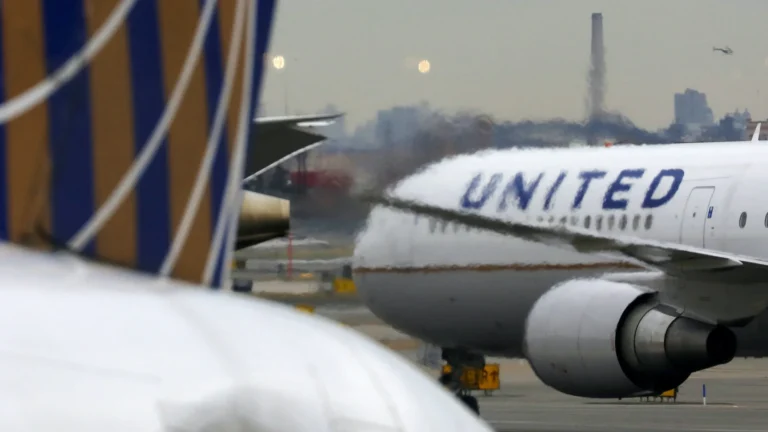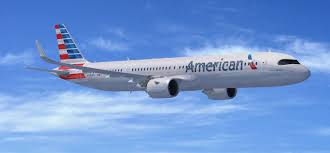American Airlines AA2131 New York-Miami Declares Emergency
In the last 30 minutes or so, American Airlines flight AA2131 between New York & Miami declared an emergency and diverted to Raleigh.American Airlines flight AA2131, which declared an emergency, is a routine scheduled flight between New York JFK & Miami.
Also, it is understood that N316SE is the aircraft involved in the incident.
As per data from Planespotters.net, N316SE is a 5.3 year old Boeing 737 MAX 8 that was delivered to the airline in December 2020.Of the 737 MAX 8 variant, American Airlines has 62 of them in their fleet.
Furthermore, of that 62, all but three are in active service, with an average fleet age of 4.0 years.
As well as the 737 MAX 8, American Airlines has the following other aircraft in their mainline fleet:
133 Airbus A319s.
48 Airbus A320s.
298 Airbus A321s.
303 Boeing 737-800s.
67 Boeing 777s.
59 Boeing 787s.
American Airlines flight AA2131, which declared an emergency, departed New York JFK at 0715 local time this morning and proceeded to track south towards Miami.
Not long after entering North Carolina’s airspace, the aircraft declared an emergency and deviated west towards Raleigh/Durham Airport.What we do know is that it’s serious enough to prompt a diversion to an airport other than it’s destination.
Furthermore, as soon as we have more information pertinent to the incident at hand, then we will update you accordingly.
For now, this remains a developing story pending additional updates.
American Airlines Flight AA2131: Analyzing the Emergency Diversion to Raleigh
On a routine morning flight from New York to Miami, American Airlines flight AA2131 experienced an unexpected emergency that necessitated a diversion to Raleigh/Durham Airport in North Carolina. This incident has garnered significant attention due to the nature of the emergency and the type of aircraft involved. This article provides an in-depth look at the events leading up to the diversion, the aircraft involved, and the broader implications for air travel safety.
The Incident: What Happened?
American Airlines flight AA2131 departed New York’s John F. Kennedy International Airport (JFK) at 07:15 local time, heading towards Miami International Airport (MIA). The flight was a routine service, typically uneventful and well within the operational capabilities of both the airline and the aircraft. However, not long after entering North Carolina’s airspace, the flight crew declared an emergency. The nature of the emergency remains unclear at this point, but it was deemed serious enough to warrant an immediate diversion from its original course.
The aircraft, a Boeing 737 MAX 8 registered as N316SE, was directed to Raleigh/Durham International Airport (RDU), approximately halfway between the flight’s departure and destination points. The diversion to RDU suggests that the situation required urgent attention and could not wait until the plane reached its intended destination of Miami.
The Aircraft: Boeing 737 MAX 8
The Boeing 737 MAX 8 involved in this incident, with tail number N316SE, is a relatively young aircraft. Delivered to American Airlines in December 2020, it is just over 5.3 years old. According to data from Planespotters.net, American Airlines operates a fleet of 62 Boeing 737 MAX 8 aircraft, of which all but three are currently in active service. The average age of these aircraft is about four years, indicating a modern and relatively new fleet.
The 737 MAX 8 is part of Boeing’s latest generation of the 737 series, known for its fuel efficiency, advanced avionics, and extended range capabilities. However, the 737 MAX series has been under scrutiny due to the well-documented issues with the MCAS (Maneuvering Characteristics Augmentation System), which led to two fatal crashes and a worldwide grounding of the fleet in 2019. Since then, Boeing and regulatory authorities have worked extensively to address these issues, and the aircraft has returned to service with additional safety measures in place.
American Airlines’ Fleet Composition
American Airlines boasts a diverse and extensive fleet, comprising various aircraft types to serve different routes and passenger needs. In addition to the 62 Boeing 737 MAX 8 aircraft, the airline’s mainline fleet includes:
- 133 Airbus A319s: A popular narrow-body aircraft used primarily for domestic and short-haul international routes.
- 48 Airbus A320s: Another narrow-body aircraft, slightly larger than the A319, also used for domestic and short-haul international flights.
- 298 Airbus A321s: A larger narrow-body aircraft frequently used on high-capacity domestic routes and some transcontinental services.
- 303 Boeing 737-800s: A predecessor to the 737 MAX 8, this aircraft forms a significant part of American Airlines’ domestic operations.
- 67 Boeing 777s: A wide-body aircraft used for long-haul international flights, known for its range and passenger capacity.
- 59 Boeing 787s: Also known as the Dreamliner, this advanced aircraft is used for long-haul routes, offering enhanced fuel efficiency and passenger comfort.
The diversity of American Airlines’ fleet allows the airline to optimize its operations across various routes, balancing capacity, range, and operational efficiency.
The Emergency Diversion: Implications and Response
The declaration of an emergency and subsequent diversion to Raleigh/Durham International Airport is a critical maneuver that underscores the gravity of the situation faced by flight AA2131. Emergency diversions are rare and typically indicate a serious issue that cannot be resolved during flight or postponed until reaching the intended destination.
In this instance, the choice to divert to RDU suggests that the emergency required immediate attention. Raleigh/Durham is a well-equipped airport capable of handling large commercial aircraft and providing necessary emergency services. The airport’s proximity to the flight path and its facilities likely made it the best option for a safe and swift landing.
Aviation Safety and Emergency Procedures
Aviation safety protocols are stringent and designed to handle a wide range of emergencies. Pilots are trained extensively to manage in-flight emergencies, and aircraft are equipped with multiple redundant systems to ensure safety. When an emergency is declared, the flight crew follows established procedures to ensure the safety of passengers and crew.
In the case of flight AA2131, the exact nature of the emergency has not been disclosed. It could range from mechanical issues, such as engine problems or hydraulic failures, to medical emergencies or other unforeseen complications. Regardless of the specific cause, the decision to divert to RDU would have been made with the primary focus on safety.
Broader Implications for Air Travel Safety
Incidents like the one involving American Airlines flight AA2131 serve as reminders of the inherent complexities and risks of air travel. While modern aviation is incredibly safe, with millions of flights operating without incident each year, emergencies do occur. The aviation industry continuously evolves to address these challenges, improving aircraft design, maintenance practices, and training programs.
The 737 MAX 8, despite its troubled past, has been thoroughly vetted and modified to address previous safety concerns. The fact that this incident involved a 737 MAX 8 will undoubtedly attract attention, but it is crucial to recognize the broader context of aviation safety. Every incident is investigated meticulously to learn from it and prevent future occurrence.
The emergency diversion of American Airlines flight AA2131 to Raleigh/Durham International Airport is a developing story that highlights the importance of aviation safety and emergency preparedness. While the specific details of the incident are still emerging, the response by the flight crew and the coordination with ground services at RDU underscore the effectiveness of established safety protocols.
As more information becomes available, it will be essential to analyze the incident thoroughly to understand its causes and implications. For now, the safe landing of flight AA2131 at RDU is a testament to the professionalism and training of the flight crew, as well as the robustness of the aviation safety systems in place.
Air travel remains one of the safest modes of transportation, thanks to the continuous efforts of airlines, regulatory bodies, and the broader aviation community to enhance safety and respond effectively to emergencies.






